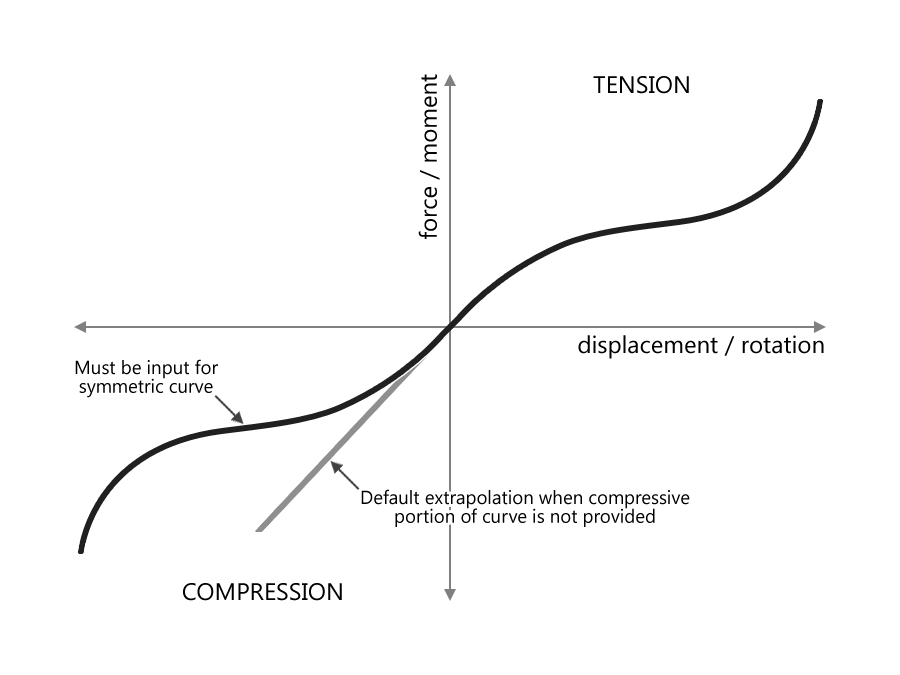Discrete springs provide a easy way to model complicated systems by using their responses in the material definitions. This post brings attention to the way LS-DYNA handles the default behavior in tension or compress when the material input does not pass through the origin (0,0) but simply begins from origin. When only one of either compression or tension data is provided, LS-DYNA extrapolates the slope, obtained from the first two pair of points from the defined region, and uses it to compute the force for any deformation in the undefined region. The default cross-region extrapolation may be inaccurate when the behavior of the discrete spring in the undefined region is supposed to represent either a symmetric or unsymmetric non-linear behavior. For representing both types of data, symmetric or unsymmetric , in tensile and compressive regions, the user must always provide a force-displacement or rotation/moment curve that passes through the origin. Figure below shows this default treatment and also highlights the input that must be provided to model the sysmmetric, or unsymmetric data when the non-linear data only in compression is provided for a discrete spring using a material model such as *MAT_SPRING_NONLINEAR_ELASTIC.
(Click image to enlarge)















